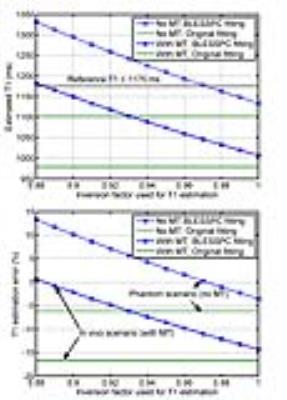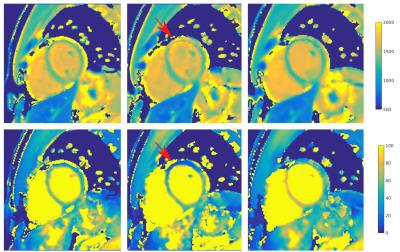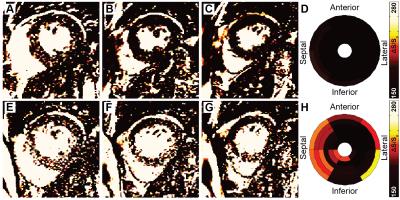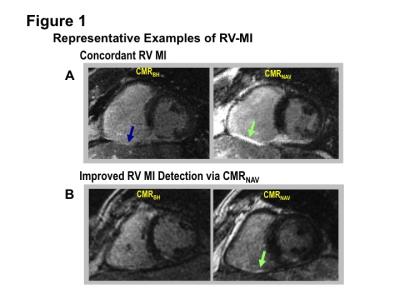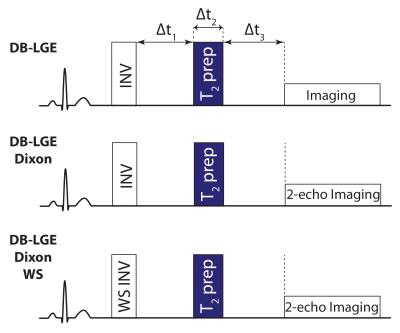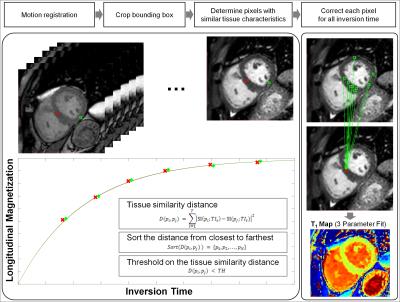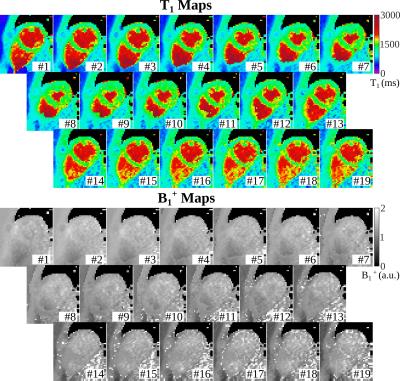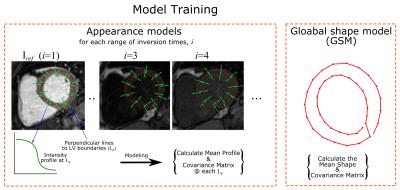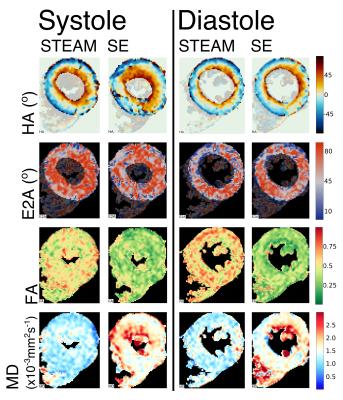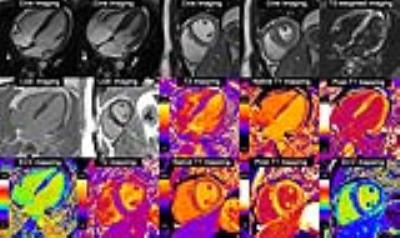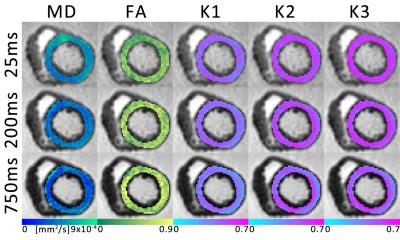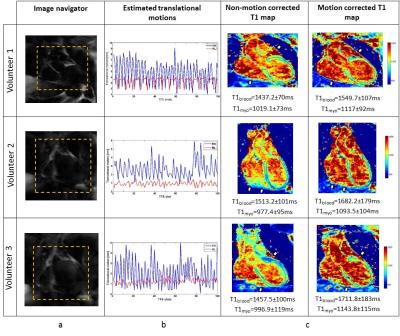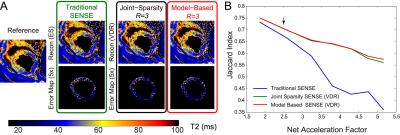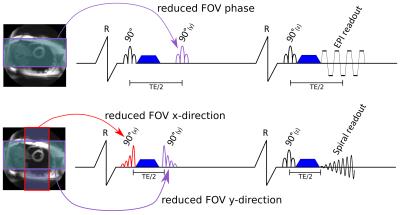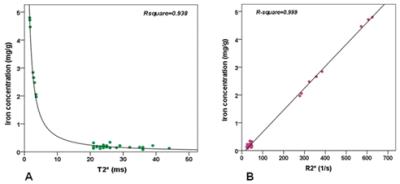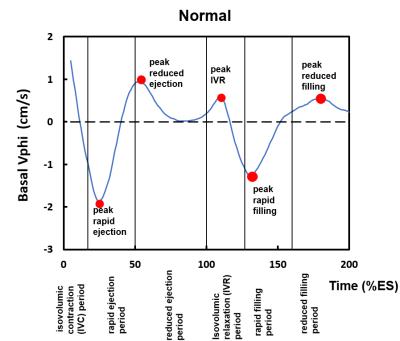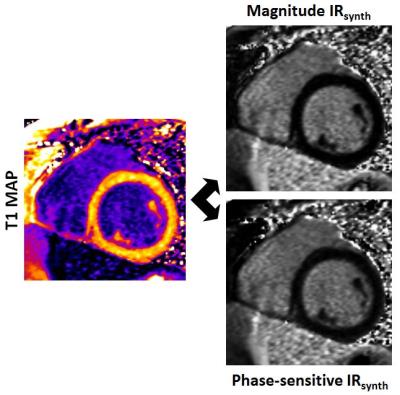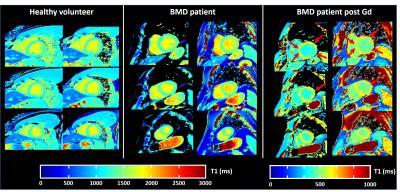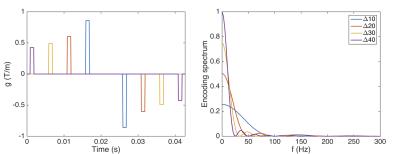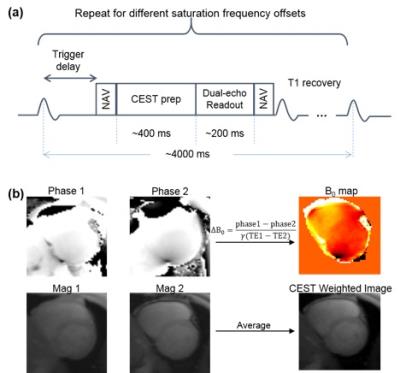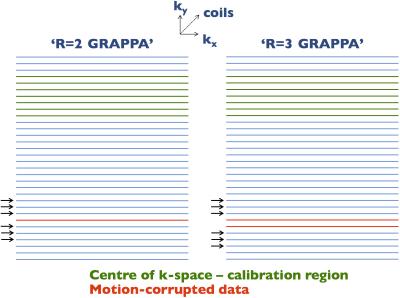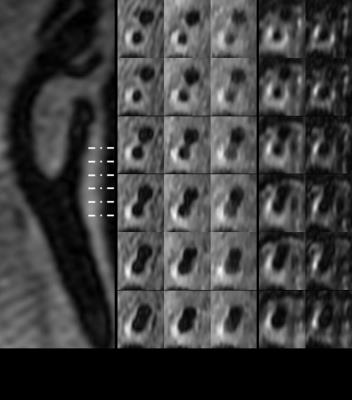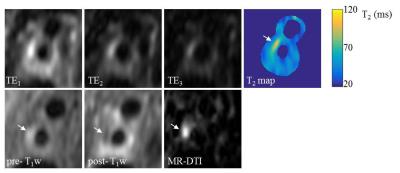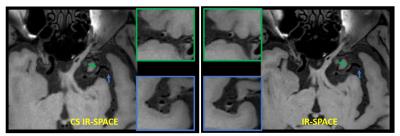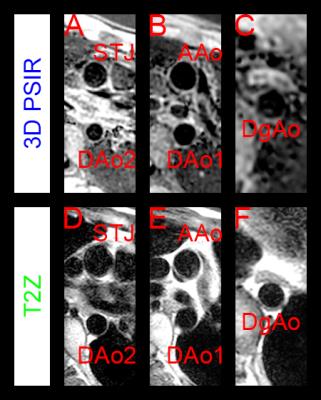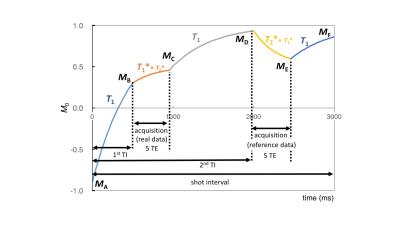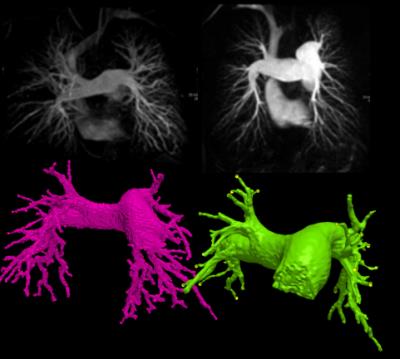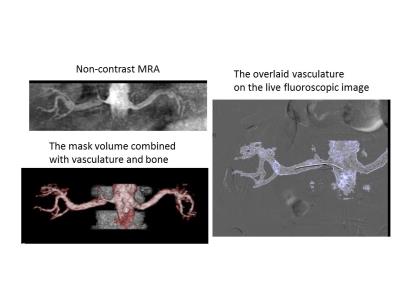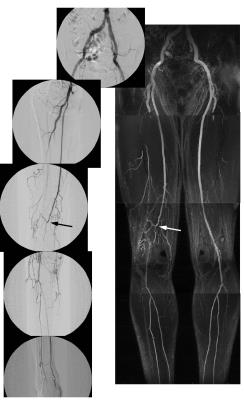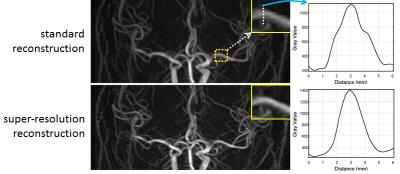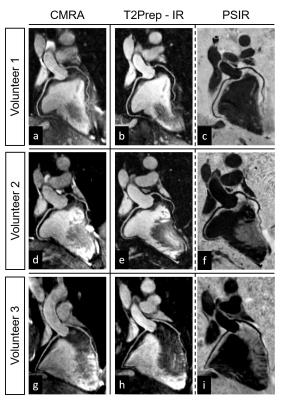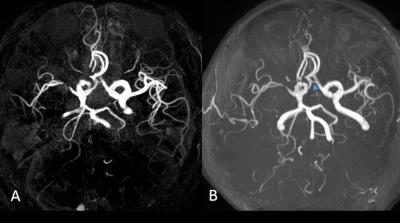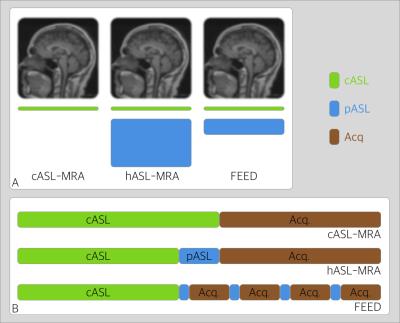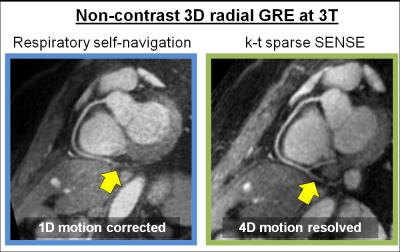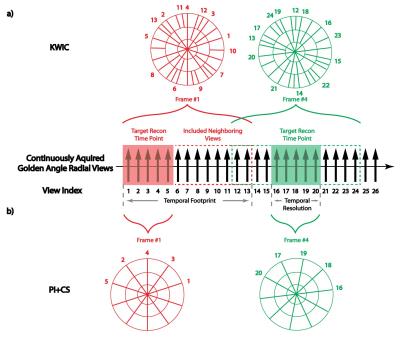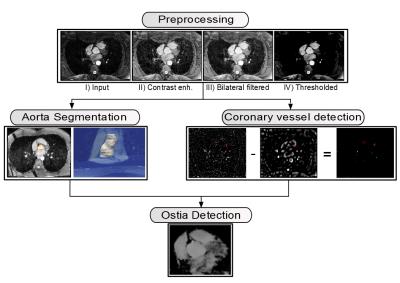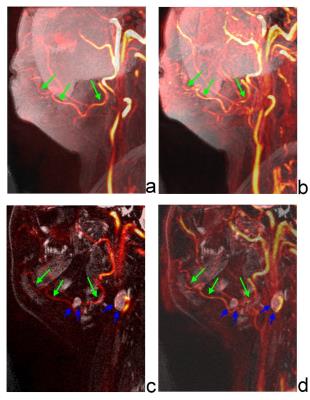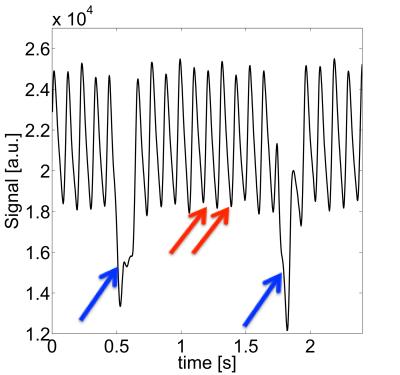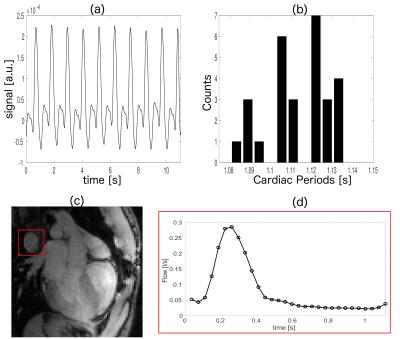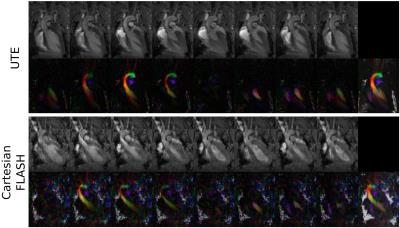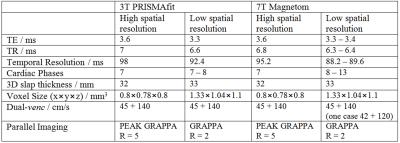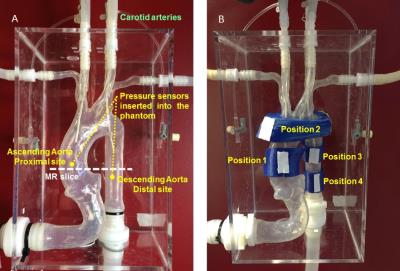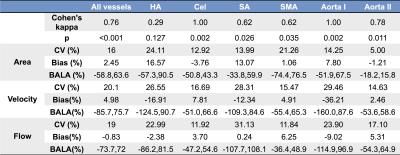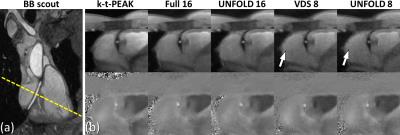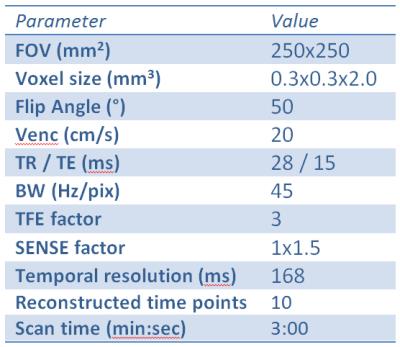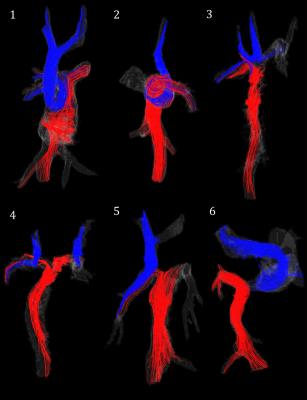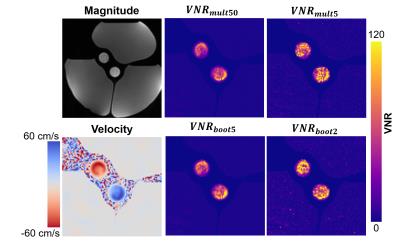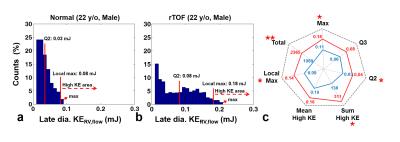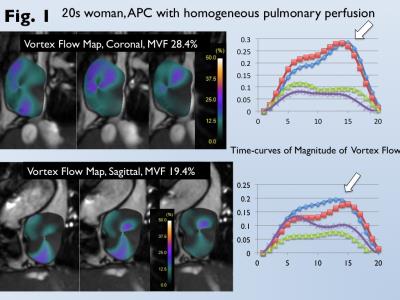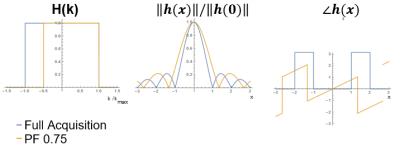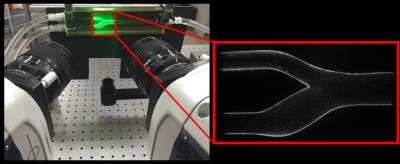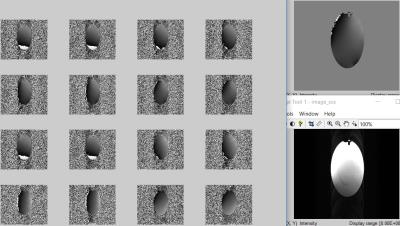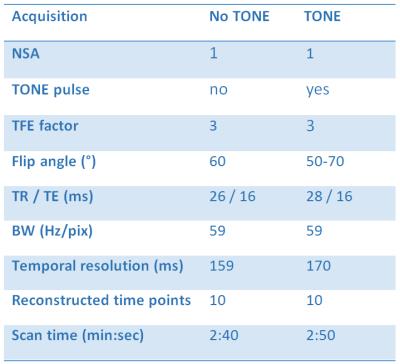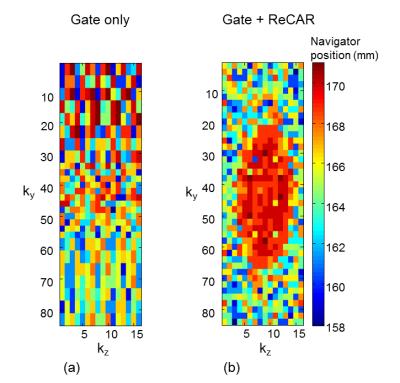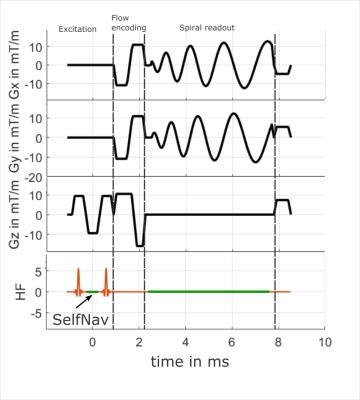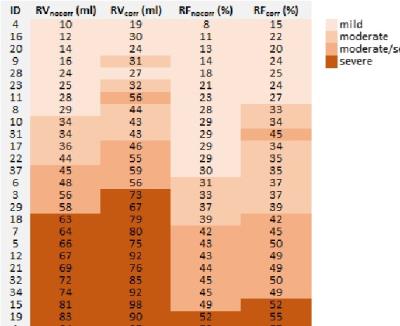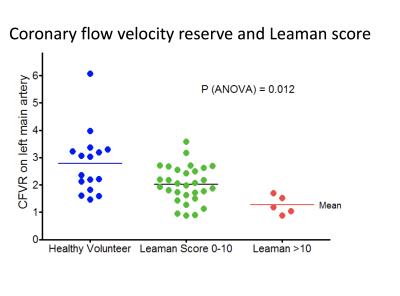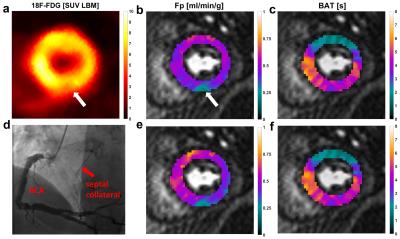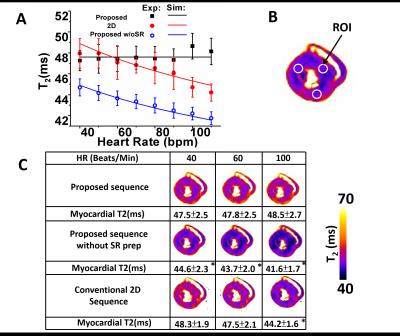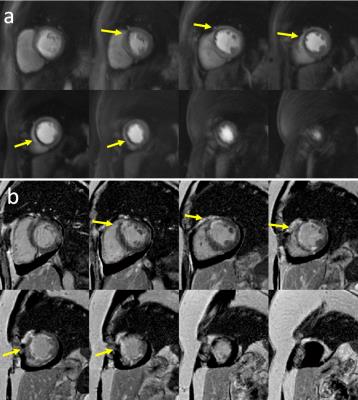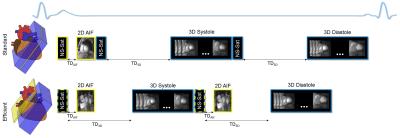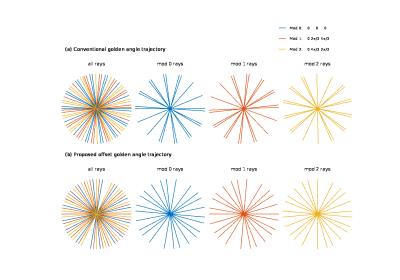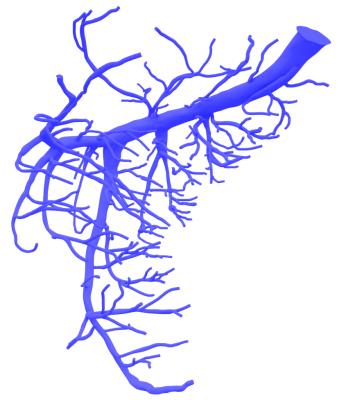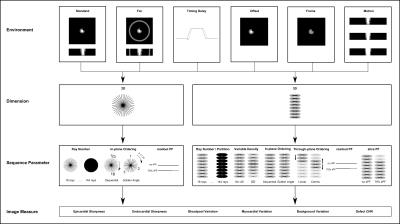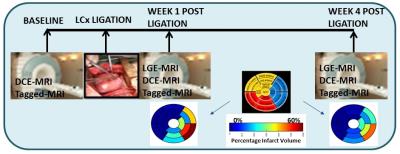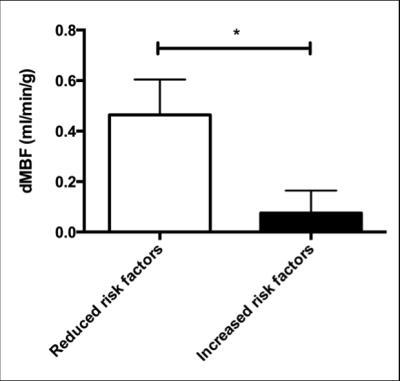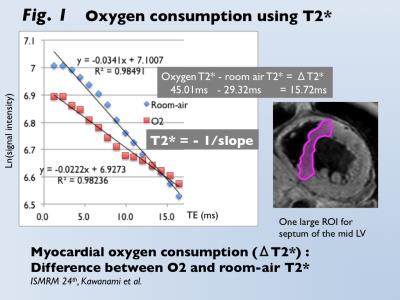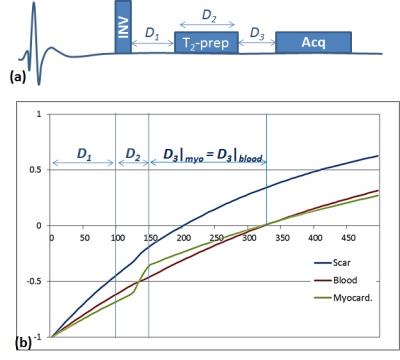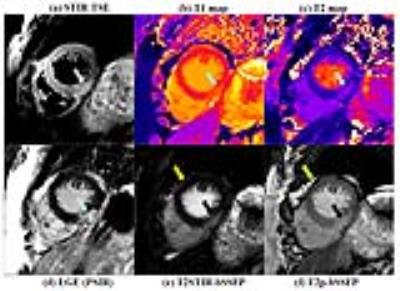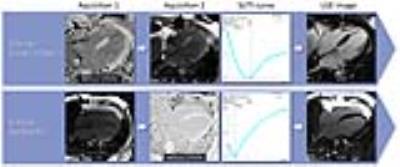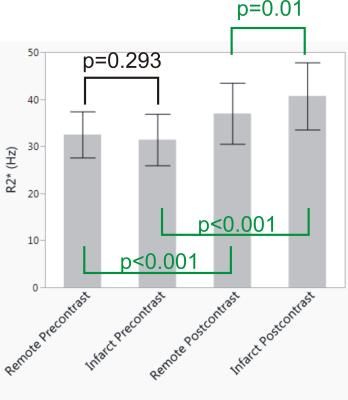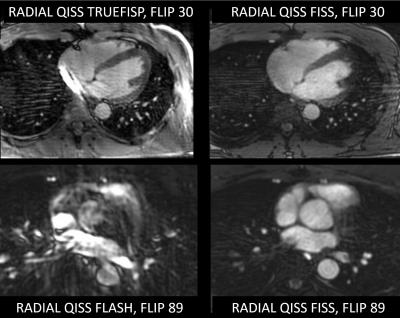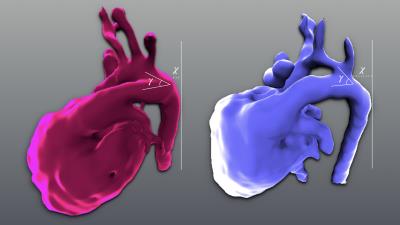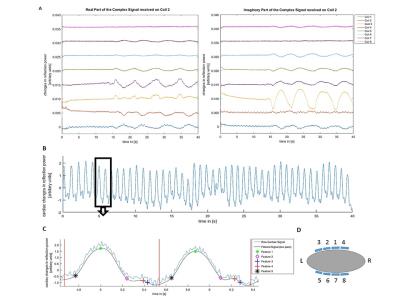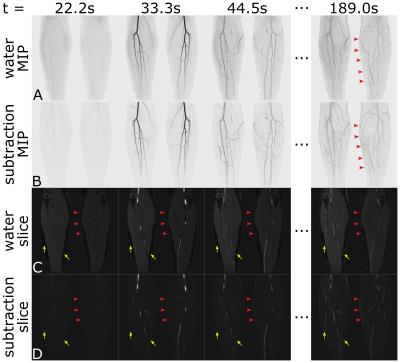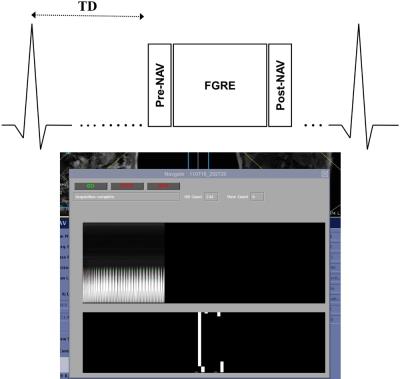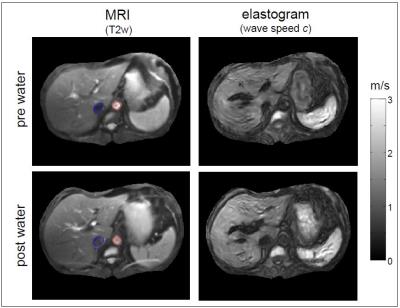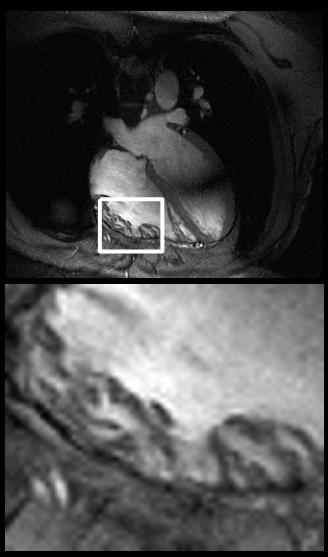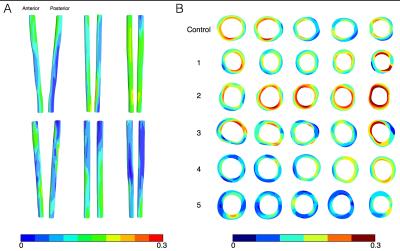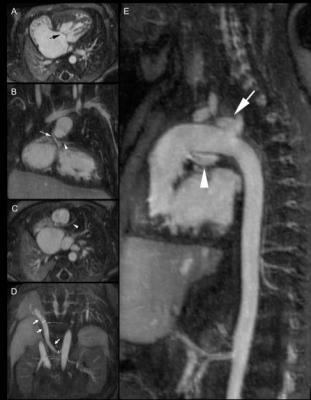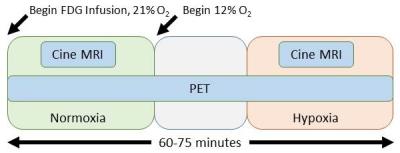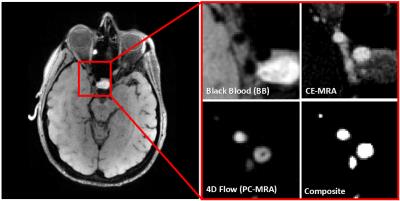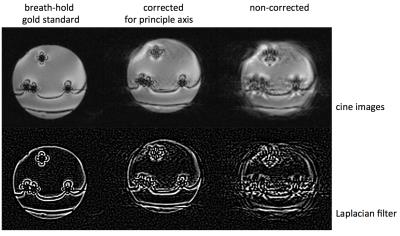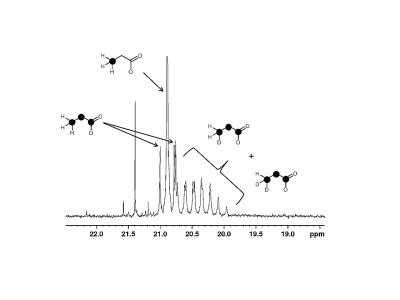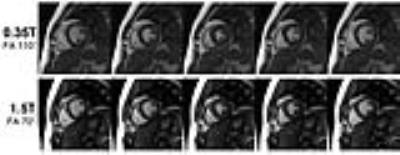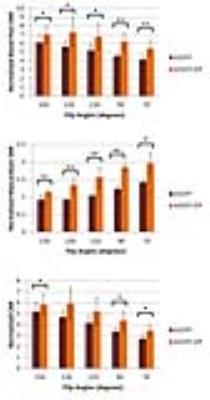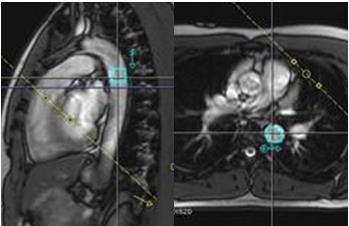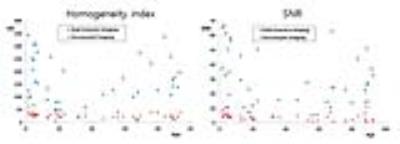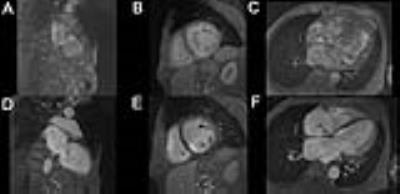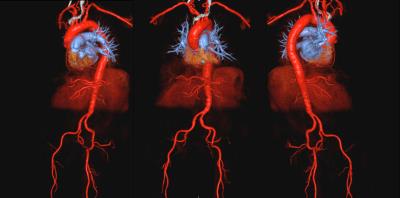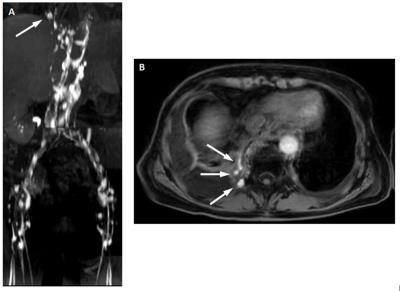Cardiac Function
Electronic Poster
Cardiovascular
Monday, 24 April 2017
| Exhibition Hall |
08:15 - 09:15 |
| |
|
Computer # |
|
3141.
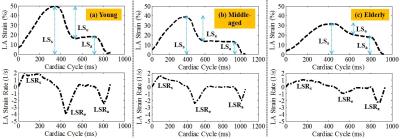 |
49 |
Age-stratified normal left atrial deformation assessed by novel longitudinal strain parameters on a 3T MR scanner 
Shuang Leng, Xiaodan Zhao, Angela Su-Mei Koh, Ru San Tan, Liang Zhong
The aim of this study was to examine the age-related normal left atrial (LA) longitudinal deformation by a novel and fast assessable strain parameter with standard cardiac magnetic resonance (CMR) imaging. A total of 60 heathy subjects (30 males, age between 20 and 80 years) were categorized by age into young, middle-aged, and elderly adults. The LA longitudinal strain and strain rate measurements corresponding to reservoir and conduit phases were negatively related to age, while no significant age-dependency was observed for LA contraction strain and strain rate values. These strain parameters can be used to evaluate LA deformation and functionality.
|
|
3144.
 |
52 |
Left ventricular-arterial coupling and mechanical efficiency assessed by pressure-volume loop in pulmonary artery hypertension patients 
Xiaodan Zhao, Fei Xu, Xiaoke Shang, Yang Dong, Wen Ruan, Gangcheng Zhang, Ru San Tan, Ju Le Tan, Yucheng Chen, Liang Zhong
Left ventricular end-systolic elastance (Ees), arterial elastance (Ea) and ventricular arterial coupling (VAC) (ratio of Ea/Ees) has been considered “gold” standard to assess ventricular contractility and performance. Ventricular arterial uncoupling due to impaired Ees or augmented Ea impaired ventricular mechanical efficiency (ME) and cardiac output. Ventricular contractility and arterial loading and the degree of their mismatching have yet been studied in pulmonary hypertension (PH). A total of 42 PH subjects who underwent both cardiac magnetic resonance (CMR) and right heart catheterization (RHC) were categorized into three groups – preserved LV ejection fraction (LVEF > 50%) and VAC < 0.8 (group 1); preserved LVEF and VAC > 0.8 (group 2); reduced LVEF (< 50%) (group 3). The results showed that VAC was correlated negatively with ME, which indicated arterial-ventricular uncoupling impaired mechanical efficiency. Importantly, the group 2 with ventricular arterial uncoupling had impaired mechanical efficiency despite its preserved ejection fraction.
|
|
3143.
 |
51 |
Accelerated Cardiac Cine “Watermark” MRI provides Cardiac Function via Magnitude Cine and 2D Myocardial Strain via Spatially Modulated Phase - permission withheld
Ronald Beyers, Davis Vigneault, Nouha Salibi, David Bluemke, Thomas Denney
We developed a parallel imaging accelerated Cine Watermark (CWM) sequence to provide normal cine magnitude images plus phase image-only multi-directional spatial encoding for quantitative cine strain -- while requiring no extra operator effort. Spatial cosine modulation post-processed by complex image sum/differencing produced separate normal magnitude cine and unique phase-only spatial modulation for strain calculation. In vivo human scans demonstrated good magnitude cine and phase-only quantified displacement. Cardiac strains were tracked by a novel non-linear least squares method combining quadratic b-spline contours, nearest neighbor optimized phase tracking, and physically-motivated regularizers. Cardiac left ventricular, short-axis, circumferential strain results agreed with previous literature.
|
|
3145.
 |
53 |
Cardiac function relation to preload variation based on free breathing motion 
Teodora Chitiboi, Rebecca Ramb, Eve Piekarski, Li Feng, Anja Hennemuth, Leon Axel
Free-breathing cardiac cine MRI provides novel information on cardiac dynamics. In this work, we investigate the relation between cardiac function and left-ventricular preload variations induced by respiratory motion, in normal subjects and patients. We used the left-ventricular diameter perpendicular to the septum as a measure of preload and the relative change in diameter between end-systole and end-diastole as a measure of functional response. There was a significantly larger change in diameter during the respiratory cycle for normal subjects compared to patients. We also found a significant correlation between preload and cardiac function for normal subjects, which was reduced for patients.
|
|
3146.
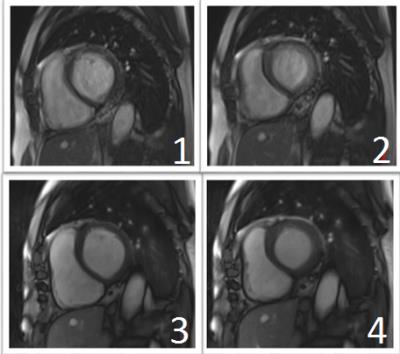 |
55 |
Quantitative Evaluation of Ultra-fast Real Time Imaging Compared to Cine at 1.5 T and Demonstration of Clinical Value in Atrial Fibrillation 
Aaron Hess, Betty Raman, Joana Leal, Adam Lewandowski, Jane Francis, Masliza Mahmod, Dirk Voit, Markus Untenberger, Jens Frahm, Stefan Neubauer, Matthew Robson
Ultra-fast real time imaging allows cine imaging of the whole heart without gating or breath-holding in around 1 minute. Here clinical cardiac metrics are evaluated and compared with those from a standard clinical acquisition in normal volunteers. We find agreement adequate for clinical use. The real time approach is evaluated in a case of atrial fibrillation and found to provide a more robust evaluation of cardiac parameters in a shorter acquisition time.
|
|
3142.
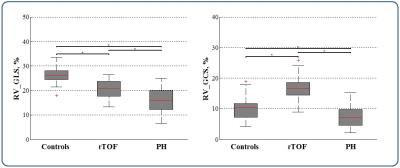 |
50 |
Right ventricular deformation by CMR feature tracking in patients with volume-overload and pressure-overload congenital heart diseases 
Shuang Leng, Xiaodan Zhao, Wen Ruan, Ru San Tan, Ju Le Tan, Liang Zhong
Two major patterns of right ventricular (RV) overload are volume overload and pressure overload. This study aimed to investigate the differences of RV myocardial deformation associated with volume and pressure overload congenital heart diseases. Cardiac magnetic resonance feature tracking was applied to RV 4-chamber and short axis view in a subject group comprising 23 patients with repaired tetralogy of Fallot (rTOF), 23 patients with pulmonary hypertension (PH), and 23 age- and gender-matched normal controls. Results indicated that PH patients had most diminished RV longitudinal and circumferential strain. Patients with rTOF had reduced RV longitudinal strain but higher circumferential strain.
|
|
3147.
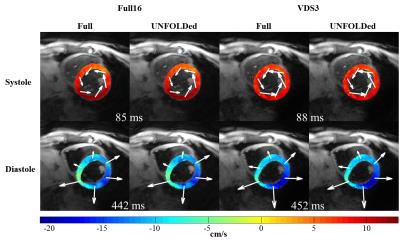 |
56 |
UNFOLDed spiral SPiRIT TPM enables high spatio-temporal resolution analysis of cardiac function - permission withheld
Marius Menza, Moritz Braig, Bend Jung, Daniela Föll, Jürgen Hennig, Axel Krafft
A detailed TPM analysis of cardiac function necessitates high spatio-temporal resolution which leads to prolonged scan durations. These scan times are typically too long for data acquisition within a single breath hold. Respiratory navigator-gating can compensate breathing-related motion, but causes an additional increase in measurement time and images with residual motion artifacts. The aim of this study was to combine UNFOLD with variable density spiral SPiRIT TPM to achieve an additional scan time reduction by a factor of 2 and an effective undersampling factor of 6. UNFOLDed SPiRIT TPM demonstrates good results and enables scan times within very short breath holding.
|
|
3148.
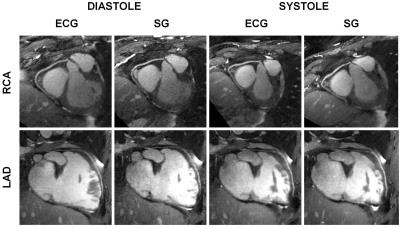 |
57 |
MOTION-RESOLVED 5D IMAGING OF THE HEART: TIME TO GET RID OF THE ECG? 
Lorenzo Di Sopra, Davide Piccini, Simone Coppo, Jessica Bastiaansen, Matthias Stuber, Jérôme Yerly
The performance of motion-resolved whole-heart MR imaging strongly depends on the quality of cardiac- and respiratory-gating signals. While navigators or self-navigation can be used to account for respiratory motion, ECG is a mainstay for synchronizing data acquisition with the cardiac cycle. We tested whether physiological motion information, directly extracted from k-space-center, can replace respiratory navigators and ECG signals. The proposed solution was applied in 9 healthy volunteers and results were compared to those obtained with the ECG-signal. Correlation between R-wave time-stamps from the ECG and the cardiac self-gating signal was excellent, while image quality and coronary artery conspicuity remained unchanged.
|
 |
3149.
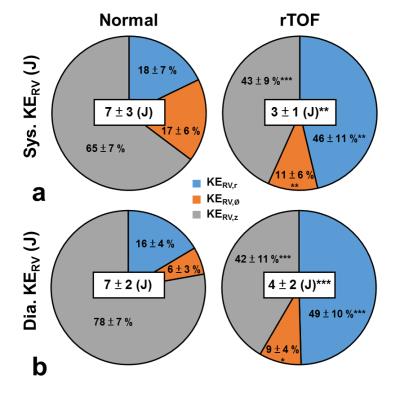 |
58 |
Does Right Ventricular Myocardial Kinetic Energy Correlate With Pressure Overload in Repaired Tetralogy of Fallot Patients? 
Meng-Chu Chang, Ming-Ting Wu, Ken-Pen Weng, Mao-Yuan Su, Marius Menza, Hung-Chieh Huang, Hsu-Hsia Peng
The association of right ventricular (RV) myocardium adapted to pressure overload of repaired tetralogy of Fallot (rTOF) patient is still unclear. We evaluated three-directional myocardial kinetic energy (KE) and correlated it with RV-related pressure. The recruited rTOF patients presented decreased peak KERV both in systole and diastole. However, patient group exhibited increased percentage of radial KERV, accompanying with highly positive correlation with RV systolic pressure. In conclusion, the investigation of the correlation between myocardial kinetic energy and RV pressure overload may helpful to comprehend compensatory mechanism and myocardial remodeling in patients with rTOF.
|
|
3150.
 |
59 |
Myocardial Strain Imaging with Feature Tracking MRI in Patients with Cardiac Amyloidosis: Comparison with Normal Control Subjects 
James Glockner
Feature tracking (FT) myocardial strain analysis was performed in 87 patients with biopsy proven cardiac amyloidosis and in 64 control subjects using long and short axis ECG-triggered b-SSFP images and commercial software. Radial, circumferential, and longitudinal peak systolic strain values were all significantly different between amyloid patients and control subjects, suggesting that this technique is feasible in assessing patients with suspected cardiac amyloidosis.
|
|
3151.
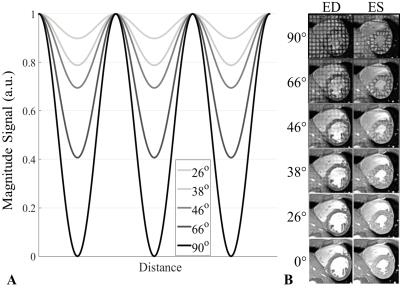 |
60 |
Feature-Tracking Regional Myocardial Strain: Effects of Tag Strength and Flip Angle 
Eric Schrauben, Andreas Greiser, Brett Cowan, Alistair Young
Using feature-tracking combined with variable tag strength and flip angle, myocardial strain is measured and compared against traditional tagging MRI in healthy volunteers .
|
|
3152.
 |
61 |
Free-Breathing Self-Navigated Isotropic 3-D CINE Imaging of the Whole Heart using Adaptive Triggering and Retrospective Gating - permission withheld
Jens Wetzl, Felix Lugauer, Randall Kroeker, Michaela Schmidt, Andreas Maier, Christoph Forman
We present a method for free-breathing whole-heart 3-D CINE imaging based on adaptive triggering and retrospective gating and compare it to a previously published method using prospective triggering. We show that our method is simultaneously robust to heart-rate variability during the scan and able to cover the entire cardiac cycle, which is not the case for prospective triggering. A validation in 6 volunteers shows reduced end-diastolic volume bias compared to a gold-standard 2-D reference for our method. Image reconstruction is integrated into the scanner system and takes less than 3 minutes.
|
|
3153.
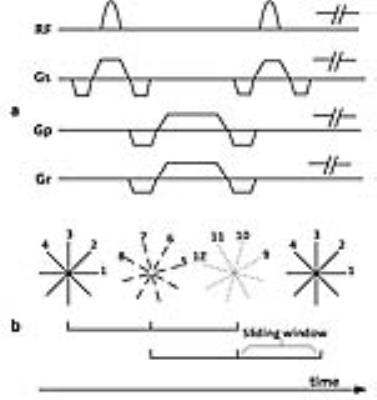 |
62 |
Real-time cardiac cine based on a radial bSSFP sequence and compressed sensing: initial experience on the evaluation of left ventricular function in patients 
Xiaoyong Zhang, Zhongzhou Chen, Xiaohai Ma, Lei Zhao, Hui Chen, Caiyun Shi, Shi Su, Xin Liu, Bensheng Qiu, Zhaoyang Fan, Guoxi Xie
Cardiac cine magnetic resonance imaging is a valuable technique for assessing cardiac function. However, conventional cardiac cine imaging is based on breath-holding and ECG-triggering, which has particularly difficulty to be used for the diagnosis of the patients with arrhythmia. In this work, a novel technique for real-time cardiac cine imaging was developed and used to evaluate the left ventricular (LV) function in patients with arrhythmia. Preliminary experiment results demonstrated that the proposed method can accurately evaluate patient’s LV function without the use of ECG triggering and improve the image quality of the patients with arrhythmia.
|
|
3154.
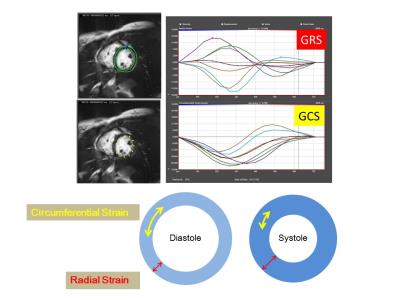 |
63 |
Global circumferential strain derived from feature tracking imaging can detect early subclinical myocardial disorders in patients with heart failure preserved ejection fraction: Comparison with tagged cine magnetic resonance imaging - permission withheld
Yoshiaki Morita, Naoaki Yamada, Makoto Amaki, Yoshiaki Watanabe, Tatsuya Nishii, Atsushi Kono, Tetsuya Fukuda
The heart failure preserved ejection fraction (HFpEF) accounts for 40–50% of all causes of heart failure. For HFpEF, identification of strain disturbances where systolic function is seemingly preserved is a decisive step toward revealing hidden heart damage. Recently, the novel technique of feature tracking imaging (FTI) was introduced for myocardial strain measurement directly from conventional cine images. We demonstrated that FTI allows for detailed strain assessment with acceptable correlation with the tagging method. In particular, global circumferential strain, which cannot be detected by analysis using cine images, may possibly serve as a sensitive and early marker of cardiac dysfunction.
|
|
3156.
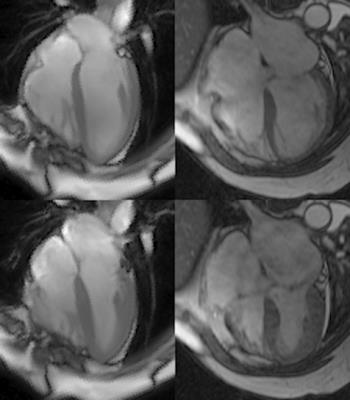 |
65 |
Four Chamber Endocardial Surface Reconstruction from Cardiac MRI Data 
Xiaoxia Zhang, Steven Lloyd, Himanshu Gupta, James Davies, Nouha Salibi, Louis Dell’Italia, Thomas Denney
Shape analysis of cardiac chambers has important implications for cardiac diseases, most extensively studied in mitral regurgitation (MR). Here we present a novel algorithm for fitting surfaces to the endocardium of all four chambers through the entire cardiac cycle and demonstrate its use in patients with MR. This algorithm, which is based on standard CMR acquisitions, demonstrates improved visualization of the chambers and their function, which can help cardiologists and surgeons in treatment planning in conditions such as mitral regurgitation.
|
|
3157.
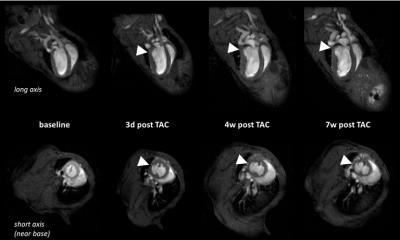 |
66 |
Regions of spared hypertrophy in pressure overloaded hearts promote severe systolic dysfunction as assessed by comprehensive cardiovascular magnetic resonance 
Sebastian Haberkorn, Joachim Schmitt, Christoph Jacoby, Jürgen Schrader, Malte Kelm, Uli Flögel
Regional heterogeneity of contractile function was described in patients with left ventricular (LV) hypertrophy, suggesting a predominant impairment of areas with distinct hypertrophy. Heterogeneity of myocardial hypertrophy therefore may contribute to global and regional abnormalities of LV function. Here, we systematically investigated the spatial and temporal patterning of myocardial hypertrophy in response to experimental pressure overload by cardiovascular MRI. Surprisingly, we identified a specific basolateral LV segment that is frequently spared from the development of myocardial hypertrophy and promotes systolic dysfunction. Moreover, the initial LV geometry and the vascular topology seemed to limit the extent of adaptation to pressure overload.
|
|
3158.
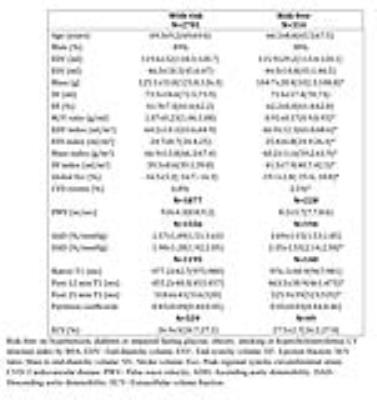 |
67 |
Healthy aging of the left ventricle in relationship to cardiovascular risk factors: The Multi-Ethnic Study of Atherosclerosis (MESA) 
Chia-Ying Liu, Shenghan Lai, Nadine Kawel-Boehm, Harjit Chahal, Bharath Ambale-Venkatesh, Joao Lima, David Bluemke
We used cardiovascular magnetic resonance imaging to measure the LV and aortic structure and function in the Multi-Ethnic Study of Atherosclerosis (MESA). The cohort was divided into groups with or without traditional risk factors. In multivariable analyses adjusting for age, sex and race, individuals with risk factors had significantly larger LV mass index (by 17%) and lower LV contractibility (circumference strain, lower by 14%). LV structure and function are also better preserved in senescent hearts in the absence of traditional cardiovascular risk factors.
|
|
3159.
 |
68 |
MRI Feature Tracking Strain Provides Incremental Prognostic Information Over Serum Biomarkers in AL Amyloidosis - video not available
Jeffery Illman, James Glockner, Ian Chang, Arvin Arani, Shivaram Arunachalam, Kiaran McGee, Martha Grogan, Angela Dispenzieri, Philip Araoz
The association of MRI feature tracking (FT) strain with all-cause mortality was retrospectively performed on 76 patients with new diagnosis of AL amyloid. Mean follow-up was 4 years. MRI FT radial, circumferential, and longitudinal strain were each associated with all-cause mortality in univariate analysis. In separate multivariate models with serum biomarker stage, radial, circumferential, and longitudinal strain each remained prognostic. This study shows the incremental prognostic value of MRI FT strain in AL amyloidosis.
|
|
3160.
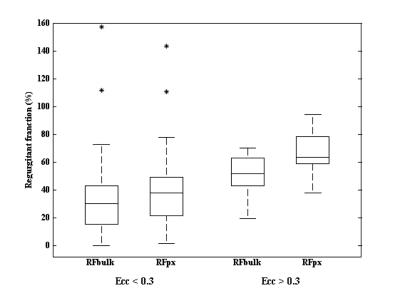 |
69 |
The impact of heterogeneity on regurgitation classification for pulmonary artery after repaired Tetralogy of Fallot 
Pei-Hsin Wu, Hsiao-Wen Chung, Ming-Ting Wu, Cheng-Wen Ko
The degree of pulmonary regurgitation has been a determinant for re-intervention for patients with repaired TOF. However, in practice, the accurate assessment of regurgitation may be interfered by the simultaneous existence of forward flow and backward flow in any single cardiac phase, which may mislead clinical decision making. In this study, we investigated the impact of heterogeneity in blood flow profiles on guiding management and the classification of regurgitation. Preliminary results suggest that pixel-wise reexamination may be required for reclassification, especially for patients with marginal moderate regurgitant fraction value.
|
|
3155.
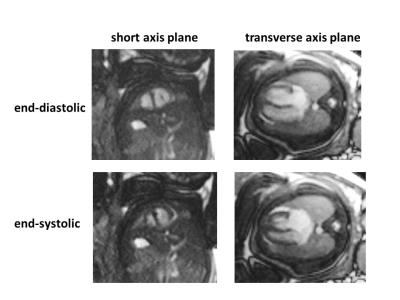 |
64 |
The utility of fetal MRI using real-time cine imaging for the functional assessment of congenital cardiovascular abnormality - permission withheld
Yoshiaki Morita, Mitsuhiro Tsuritani, Naoaki Yamada, Yoshiaki Watanabe, Tatsuya Nishii, Atsushi Kono, Jun Yoshimatsu, Tetsuya Fukuda
Volumetric analysis of the fetal heart by ultrasound (US) in congenital heart disease is often difficult due to its complex anatomy and US-specific artifacts. We implemented the real-time cine sequence without ECG triggering and the post-processing technique (PhyZiodynamics), which enabled noise reduction and interpolation based on motion coherence. Fetal MRI using real-time cine imaging allowed for detailed functional assessment in both ventricles and showed acceptable levels of correlation with both the prenatal and postnatal US findings, suggesting that this technique is a promising diagnostic tool for functional assessment of congenital cardiovascular abnormalities.
|
|
3161.
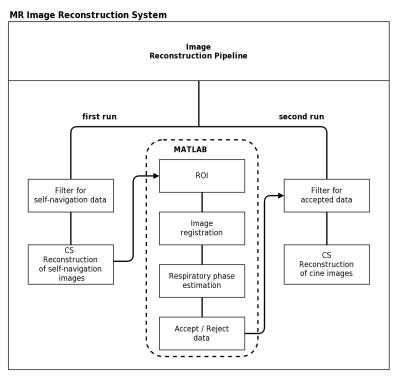 |
70 |
Feasibility Study: 2-D Self-Navigation using Compressed Sensing Reconstruction for Respiratory Gating in Free-breathing 3-D CINE Imaging 
Ivo Prochaska, Jens Wetzl, Christoph Forman, Armin Nagel, Andreas Maier
We investigate the feasibility of using 2-D self-navigation for respiratory gating for free-breathing whole-heart 3-D CINE imaging, where respiration-induced cardiac motion may be more easily detected than in commonly used 1-D self-navigation methods. We compare self-navigation images, derived gating signals and resulting 3-D CINE images of the 1-D and 2-D methods and find that respiratory motion can be well visualized with the 2-D method; both methods show a good overlap of gating signals and little difference in resulting image quality. 2-D self-gating may thus be considered a promising alternative to 1-D self-navigation as it allows easier detection of respiratory motion.
|
|
3162.
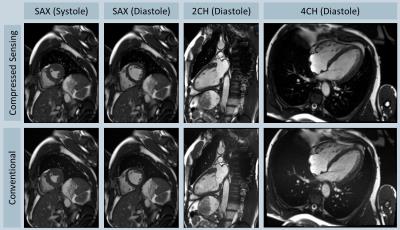 |
71 |
Accelerated 2D Cine MRI Featuring Compressed Sensing and ECG-triggered Retro-gating - permission withheld
Christoph Forman, Randall Kroeker, Michaela Schmidt
We present the combination of ECG-triggered retrospective gating and compressed sensing for segmented 2D Cine imaging at high spatiotemporal resolution. This enables capturing the complete cardiac cycle in segmented acquisitions, while significantly reducing the total acquisition time with compressed sensing and auto-calibration. The method was evaluated in 8 healthy volunteers and ventricular function parameters were compared to reference 2D Cine acquisitions featuring ECG-triggered retro-gating. Both methods resulted in comparable image quality and equivalent quantitative values for ventricular function parameters.
|
|
3163.
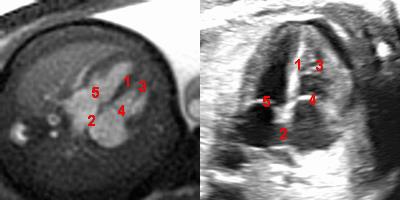 |
72 |
Identification and Measurement of Anatomical Landmarks Using Fetal Cardiac Cine MRI in Comparison with the Clinical Gold Standard Echocardiography 
Jerome Yerly, Jerome Chaptinel, Yvan Mivelaz, Milan Prsa, Leonor Alamo, Yvan Vial , Gregoire Berchier, Jean-Baptiste Ledoux, Chantal Rohner, Matthias Stuber
The recent development of a self-gated framework to reconstruct cardiac cine MR images without the need for an external ECG signal has opened the door to prenatal cardiac examination with MRI. This study investigates the potential of this technique for fetal cardiac MRI and compares its performance with the clinical gold standard echocardiography. Standard views from clinical fetal echocardiographic examinations were acquired with both imaging modalities and two experienced readers independently compared them qualitatively and quantitatively. The results showed good agreement between the two modalities and validate the use of MRI for prenatal evaluation of the heart.
|
|
